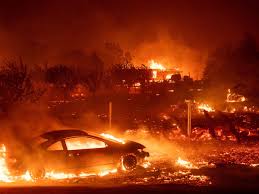Recovery and Resilience: The Aftermath of the Paradise California Fire

Introduction
The devastating Paradise California fire, which ravaged the area in November 2018, remains a significant event in the history of wildfires in the United States. The Camp Fire, as it is officially known, was the deadliest and most destructive wildfire in California’s history, claiming 85 lives and destroying nearly 19,000 structures. The recovery efforts and implications of this tragedy continue to be relevant, as communities strive to rebuild and adapt to changing environmental factors.
Details of the Fire
The Camp Fire originated near the town of Paradise, consuming over 153,000 acres in just a matter of days. The rapid spread of the flames was exacerbated by strong winds and dry conditions, common in California’s Northern Sierra region. In addition to the loss of life and property, the fire significantly impacted infrastructure, necessitating an urgent humanitarian response and long-term planning.
Current Recovery Efforts
As of 2023, recovery efforts in Paradise are focused on rebuilding homes, restoring infrastructure, and supporting the community’s mental health. The town has received support from various state and federal programs aimed at disaster recovery, including the Federal Emergency Management Agency (FEMA) and local non-profit organizations. According to the Butte County officials, over 3,000 homes have been rebuilt, and significant improvements are underway to the town’s basic services, including water supply and roads.
Community Resilience Programs
Moreover, there are ongoing programs aimed at enhancing community resilience against future wildfires. These include educational initiatives regarding fire safety, vegetation management, and emergency preparedness. The impact of these programs has been felt throughout the community, as residents actively participate in workshops and training sessions to better prepare for potential fire scenarios.
Conclusion
The importance of understanding the ramifications of the Paradise California fire extends beyond its immediate effects. The ongoing recovery emphasizes the need for resilience and sustainable practices in disaster-prone regions. With significant public support, the town is on a path toward recovery, offering lessons to other communities facing similar challenges. As climate change continues to heighten the frequency and intensity of wildfires, the strategies developed in Paradise could serve as a blueprint for future disaster preparedness and community resilience. The journey of healing remains long, but the spirit of the Paradise community is a testament to the power of resilience.









